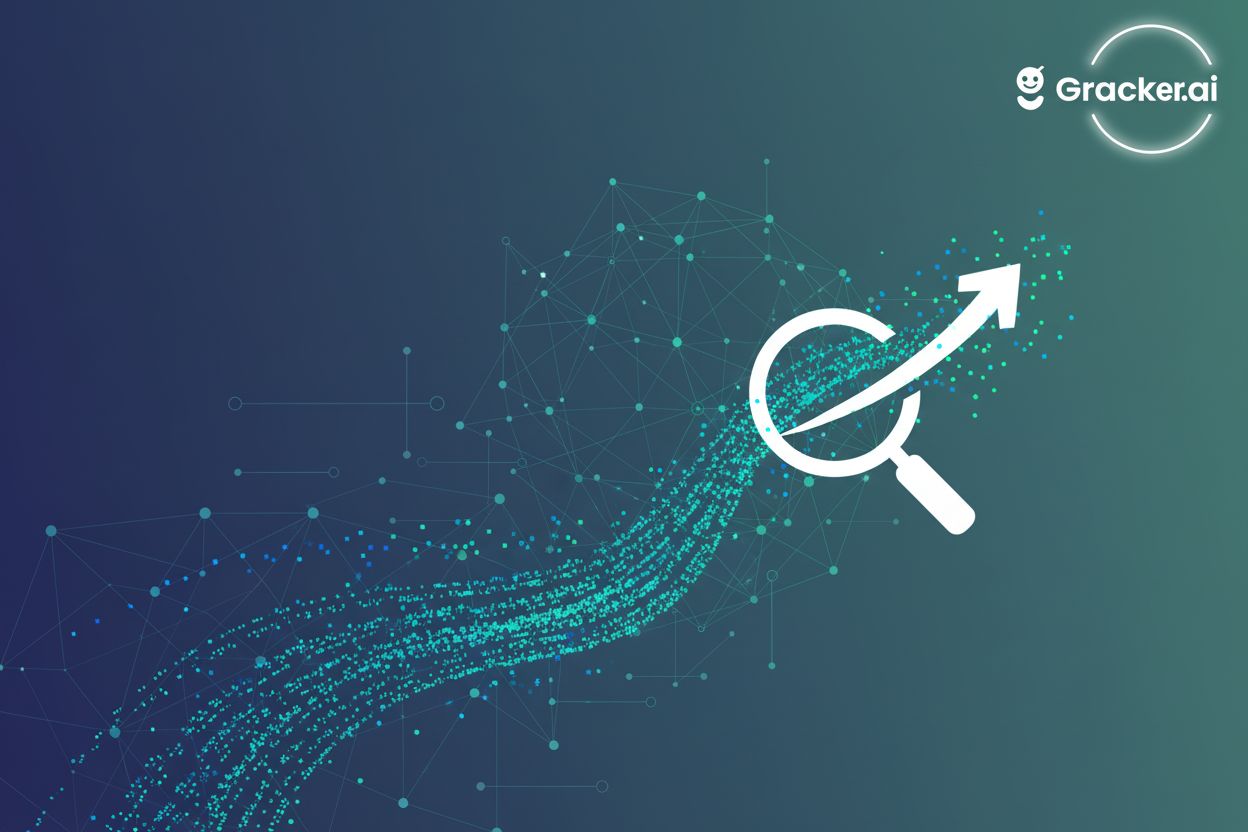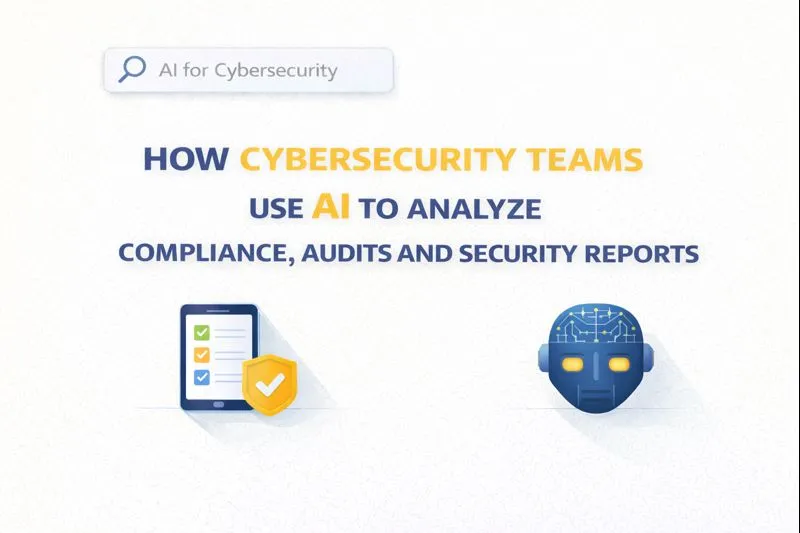The Future of Growth: AI-Powered Programmatic SEO with Real-Time Search Console Integration

How smart companies are using artificial intelligence and real-time data to build content empires that generate customers on autopilot
While you sleep, an intelligent system monitors every search query hitting your website, identifies content gaps in real-time, automatically generates high-quality pages to fill those gaps, and optimizes them based on live performance data from both Google and Bing. By morning, you wake up to new qualified leads and increased organic traffic—all without lifting a finger. It's the reality that forward-thinking companies are building today by combining artificial intelligence with real-time search console data integration. Think of it as evolving from manual farming to precision agriculture—where every decision is data-driven, every action is optimized, and every result is amplified, much like how ERP for agriculture systems unify data to streamline and enhance every stage of farm management. much like how ERP for agriculture systems unify data to streamline and enhance every stage of farm management.
Understanding the Revolutionary Foundation
To truly grasp why this approach represents such a quantum leap in digital marketing effectiveness, let's first understand what makes the combination of AI and real-time search data so powerful. Traditional programmatic SEO, as we learned in our previous exploration, involves creating page templates and populating them with database information to generate hundreds or thousands of targeted pages. It's like having a factory assembly line for content creation. However, this traditional approach has always suffered from a critical limitation: it operates somewhat blindly, without real-time feedback about what's actually working. Now, with Google's recent addition of 24-hour hourly data access to the Search Console API, we can get near real-time performance data from Google Search Console. This is like giving our content factory a sophisticated control system that can adjust production based on immediate market feedback. Similarly, Bing Webmaster Tools has introduced real-time updates and comprehensive SEO recommendations that provide instant, actionable insights tailored to your site's unique needs. When you combine these real-time data streams with AI's pattern recognition and content generation capabilities, you create what I call an "intelligent content ecosystem"—a self-improving system that becomes more effective over time.
The Real-Time Data Revolution
Let me help you understand why real-time search console integration changes everything by drawing a comparison to how modern businesses operate versus how they used to function. Imagine you're running a retail store in the 1950s. You'd order inventory based on last month's sales reports, wait weeks for delivery, and hope you guessed correctly about what customers wanted. You'd only know if you made the right decision after weeks or months had passed. This is essentially how traditional SEO has always worked—you create content based on keyword research, publish it, and wait weeks or months to see if it performs well. Now contrast that with how Amazon operates today. They monitor every click, every search, every purchase in real-time. Their algorithms automatically adjust pricing, inventory levels, and product recommendations based on live customer behavior. When they notice a spike in searches for a particular product, they can instantly adjust their strategy to capitalize on that trend. With Google Search Console API's new 24-hour hourly data capability, you can now access hourly granularity data for the past 8 days, providing near real-time insights into your website's performance. This transforms your SEO strategy from reactive to proactive, from guesswork to precision.
How AI Amplifies Real-Time Data Intelligence
The true magic happens when you combine this real-time data with artificial intelligence. Think of AI as your tireless analyst who never sleeps, never gets overwhelmed by data complexity, and can spot patterns that human minds might miss. According to recent statistics, 47% of marketers are already implementing AI SEO tools to improve search efficiency, and 84% are using them to identify and leverage emerging search trends. But most are still using AI reactively—to optimize existing content or research keywords. The revolutionary approach involves using AI proactively, as an intelligent autopilot system for your entire content strategy. Here's how this intelligent system works in practice: Pattern Recognition at Scale: AI tools can analyze large datasets quickly, identifying patterns and trends that humans might miss, eliminating many manual tasks. When your AI system notices that searches for "cybersecurity compliance for remote teams" suddenly spike by 300% in the last 24 hours, it doesn't just alert you—it automatically triggers the creation of targeted content to capture that opportunity. Predictive Content Generation: Predictive SEO analysis uses AI to forecast future search trends and user behavior. Your system can predict which topics will trend before your competitors even know they exist, giving you first-mover advantages in emerging search categories. Intelligent Optimization: AI tools like MarketMuse and Clearscope can provide real-time, AI-based suggestions to optimize your content for SEO throughout the writing process. But when connected to live search console data, these tools can optimize based on actual performance metrics rather than just theoretical best practices.
Building Your AI-Powered Programmatic SEO System
Now that you understand the conceptual foundation, let's explore how to actually build this intelligent content system. Think of this as constructing a sophisticated machine with multiple interconnected components.
Component 1: Real-Time Data Integration Layer
Your first step involves creating connections to both Google Search Console and Bing Webmaster Tools APIs. The Google Search Console API provides programmatic access to search analytics, allowing you to query search performance data, manage sitemaps, and monitor crawl errors. Bing's Content Submission API allows websites to submit content directly to Bing, helping with faster indexing and reduced crawl activity on your site. Additionally, you can submit up to 10,000 URLs per day with no monthly quotas using their Adaptive URL submission feature. The key insight here is that you're not just pulling data—you're creating a two-way communication system. Your AI doesn't just monitor performance; it can also automatically submit new content for immediate indexing and crawling.
Component 2: AI Analysis and Decision Engine
This is where the intelligence lives. Tools like GrackerAI allow you to automate workflows and create or update hundreds of pages at scale by connecting apps like Google Sheets, Notion, and HubSpot. Think of this as your system's brain—it takes raw data from search consoles and transforms it into actionable insights. Advanced platforms combine large language models (like GPT-4, Claude, and Gemini) with flexible templates and integrations, allowing you to generate high-quality, on-brand content faster without adding headcount. These platforms can be configured to automatically trigger content creation when specific conditions are met in your real-time data feeds.
Component 3: Intelligent Content Generation System
Here's where your templates and databases come alive with AI intelligence. Tools like Create Pages allow you to build advanced programmatic SEO templates with flexible data handling and conditional logic, creating high-quality pages faster than traditional methods. The revolutionary aspect is that your content generation isn't based on static templates anymore. AI tools can automatically gather text, links, and images from web pages without coding, and trigger automation based on changes in your data sources. When your real-time monitoring detects opportunity, your AI system can automatically research the topic, generate comprehensive content, and publish optimized pages—all without human intervention.
Component 4: Continuous Optimization Loop
Tools like Alli AI can automatically detect and fix technical SEO issues like missing canonical tags, duplicate meta descriptions, and slow-loading pages with one click. Your system continuously monitors performance and automatically implements improvements based on what's working.
Implementation Strategy: From Setup to Scale
Let me walk you through a practical implementation roadmap that builds complexity gradually, ensuring each stage is solid before advancing to the next.
Phase 1: Foundation Setup
Start by establishing your data connections and basic AI workflows. Connect to Google Search Console API to access search analytics data and set up periodic monitoring for specific pages and keywords. Simultaneously, integrate with Bing Webmaster Tools to capture the growing importance of Microsoft's search ecosystem. As one expert notes, "the Bing index is crucial in the future of SEO" because it now powers ChatGPT, Meta AI, LinkedIn AI, and Microsoft Copilot. By monitoring both search engines, you're positioning yourself for the AI-powered search future.
Phase 2: AI Workflow Development
Implement tools like GrackerAI to automate content creation workflows. These platforms allow content marketing teams to create editorial content or programmatically create editorial landing pages at scale. Configure your AI to monitor specific triggers in your real-time data. For example, when search volume for a particular keyword pattern increases by more than 50% in a 24-hour period, automatically trigger content creation for related long-tail variations.
Phase 3: Intelligent Scale
Set up automation to be triggered when you change content within documents like Google Sheets or Airtable, so your pages and website data update automatically without manual intervention. This is where the system becomes truly intelligent. Your AI monitors performance across all generated pages, identifies which templates and topics perform best, and automatically adjusts future content generation accordingly.
The Customer Acquisition and Growth Multiplier Effect
Now let's examine why this approach is so dramatically more effective for customer acquisition compared to traditional methods. The difference isn't just incremental—it's transformational.
Speed to Market Advantage
Traditional content marketing requires weeks or months to identify opportunities, create content, and see results. With real-time 24-hour data access, you can identify and respond to search trends within hours instead of weeks. When a breaking industry development creates new search demand, your AI system can have relevant content live and ranking before your competitors even know the opportunity exists. Consider a scenario where new cybersecurity regulations are announced. Within hours, your system detects increased searches for compliance-related terms, automatically generates comprehensive guides for different industries and company sizes, and begins capturing that traffic while competitors are still planning their response.
Quality Lead Generation at Unprecedented Scale
The global AI SEO software tool market is estimated to reach $4.97 billion by 2033 from $1.99 billion in 2024. This growth reflects the superior results companies achieve with AI-powered approaches. Your intelligent system doesn't just create more content—it creates better-targeted content. By analyzing real-time search behavior patterns, it can identify the exact pain points and questions your prospects have at different stages of their buyer journey, then automatically create content that addresses those specific needs.
Compound Growth Effects
The most powerful aspect of this approach is how it creates compound growth over time. Traditional SEO efforts often plateau because human teams can only create and optimize content at limited scales. AI automation allows you to expand SEO campaigns without increasing workload, ensuring efforts stay aligned with latest trends and best practices. Your AI system learns from every page it creates, every ranking it achieves, and every conversion it generates. This means your content quality and targeting effectiveness improve automatically over time, creating an ever-widening competitive moat.
Overcoming Implementation Challenges
Every revolutionary approach comes with obstacles to overcome. Let me help you understand the main challenges and proven solutions for implementing AI-powered programmatic SEO.
Challenge 1: Data Quality and Integration Complexity
The biggest technical hurdle involves ensuring clean, reliable data flows between your search consoles, AI tools, and content management systems. The Google Search Console API limits query results to 50,000 rows per call, so if you're pulling data from thousands of pages, you'll need to batch these requests. Solution Strategy: Start with smaller data sets and gradually scale up. Use integration platforms like Improvado that can automate the process of importing search console data into your CRM and marketing tools, running continuously in the background.
Challenge 2: Content Quality at Scale
When generating hundreds or thousands of pages automatically, maintaining quality becomes critical. Google doesn't care if content is AI-generated or not—it only cares about content being genuine, useful, and relevant. Solution Strategy: Implement human oversight systems where AI generates content but human editors review and refine it before publication. This combines automation efficiency with human quality control.
Challenge 3: Technical Infrastructure Requirements
Building robust AI-powered systems requires technical expertise that many marketing teams lack. Many advanced programmatic SEO features are locked behind paywalls and may require significant time to set up effectively. Solution Strategy: Start with user-friendly platforms like Create Pages at $19/month or Bardeen AI at $10/month that provide powerful automation without requiring extensive technical knowledge.
Success Metrics and Performance Indicators
Understanding how to measure success in this new paradigm requires shifting from traditional SEO metrics to more sophisticated performance indicators that reflect the AI-powered approach's unique advantages.
Traditional vs. AI-Powered Metrics
Traditional SEO teams typically measure keyword rankings, organic traffic, and conversion rates. While these remain important, AI-powered programmatic SEO enables entirely new categories of performance measurement. Speed Metrics: How quickly can your system identify and respond to new opportunities? With 24-hour data access, you should track your system's response time from opportunity identification to content publication. Intelligence Metrics: How effectively does your AI system predict and capitalize on trends before competitors? Track the percentage of your traffic that comes from content created in response to emerging trends versus reactive content. Efficiency Metrics: Measure the reduction in production time from idea to publish. Some companies report going from 8 hours per article to automated generation within hours.
Customer Acquisition Effectiveness
The ultimate test of your AI-powered system is its impact on customer acquisition speed and quality. Track metrics like time from visitor arrival to qualified lead conversion, and the percentage of leads that come from AI-generated content versus traditional content. Monitor how your lead quality changes as your AI system learns and improves. Superior AI-powered systems should show improving lead quality over time as the algorithms become better at matching content to buyer intent.
The Competitive Landscape and Future Outlook
To help you understand the strategic importance of implementing this approach now, let's examine the competitive dynamics and future trends shaping this space.
The Early Mover Advantage Window
With 47% of marketers already implementing AI SEO tools but most using them reactively rather than proactively, there's still a significant opportunity for companies that implement comprehensive AI-powered programmatic SEO systems. The companies that build these intelligent content systems now will establish data advantages and algorithmic sophistication that will be difficult for competitors to match later. Think of how Amazon's early investment in recommendation algorithms created a competitive moat that competitors still struggle to overcome.
Integration with Emerging Search Technologies
Bing Webmaster Tools is previewing Copilot integration that will allow users to ask questions about their data and receive instant, contextually relevant answers. This suggests that future SEO will become increasingly AI-driven on both the creation and analysis sides. Microsoft's IndexNow protocol enables real-time content indexing by notifying search engines immediately when content changes, providing faster indexing and enhanced SEO efficiency. Companies that integrate these emerging technologies into their AI-powered systems will maintain significant advantages.
The Path to Market Leadership
The most successful implementations of AI-powered programmatic SEO don't just generate more traffic—they establish thought leadership positions that become self-reinforcing. When your AI system consistently produces the most comprehensive, timely, and useful content in your industry, you become the default source that others reference and link to. This creates what economists call "network effects"—the more valuable your content becomes, the more people link to it, which makes it rank higher, which makes it more valuable, creating an upward spiral that's difficult for competitors to disrupt.
Implementation Roadmap: Your Next Steps
Now that you understand both the potential and the practical requirements, let's create a concrete action plan for implementing AI-powered programmatic SEO with real-time search console integration.
Assessment and Planning
Begin by auditing your current SEO infrastructure and identifying integration points. Ensure your website has a strong SEO foundation with well-structured architecture, optimized meta tags, and high-quality existing content before implementing programmatic SEO. Set up basic API connections to both Google Search Console and Bing Webmaster Tools. Configure initial data pulls to understand your baseline performance and identify your highest-opportunity content categories.
AI Workflow Development
Choose and configure your AI content platform. Tools like GrackerAI provide done-for-you templates based on SEO best practices, while also allowing custom workflow creation. Start with simple automations—perhaps generating variations of your best-performing content or creating location-specific versions of successful pages.
Intelligence Layer Implementation
Configure predictive analysis systems that use AI to forecast future search trends and user behavior, allowing you to create content for opportunities before they become competitive. Set up monitoring systems that track your content performance in real-time and automatically adjust your content generation algorithms based on what's working.
Scale and Optimization
Implement advanced automation where content optimization ensures every piece is optimized for both search engines and readers, with AI tools analyzing content and suggesting improvements automatically. Begin expanding into new content categories and markets as your system proves its effectiveness in your initial focus areas.
Conclusion: The Future is Intelligent, Automated, and Immediate
The convergence of artificial intelligence with real-time search console data represents more than just an improvement to existing SEO practices—it's a fundamental evolution in how businesses can capture and convert online demand. Companies that master this approach will operate with speed, precision, and scale that makes traditional content marketing seem quaint by comparison. They'll identify opportunities while competitors are still planning, create comprehensive content while others are still researching, and capture market share while others are still optimizing. The technical infrastructure exists today. The AI tools are mature and accessible. The search engines provide real-time data streams. The only question is whether your organization will embrace this transformation now or find itself responding to competitors who moved first. Remember, every day you delay implementation is a day that search opportunities pass by uncaptured, potential customers find solutions elsewhere, and competitors potentially establish advantages that become harder to overcome. The future of programmatic SEO isn't just automated—it's intelligent, immediate, and incredibly powerful. The companies that build these systems now will define what competitive advantage looks like in the next decade of digital marketing. The revolution has begun. The question isn't whether you'll participate—it's whether you'll lead it.




